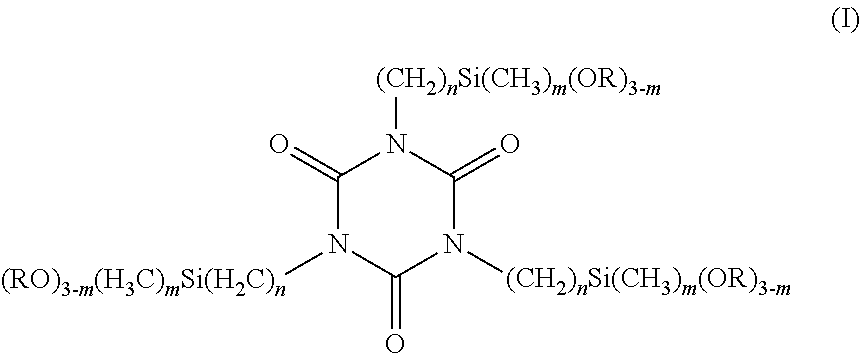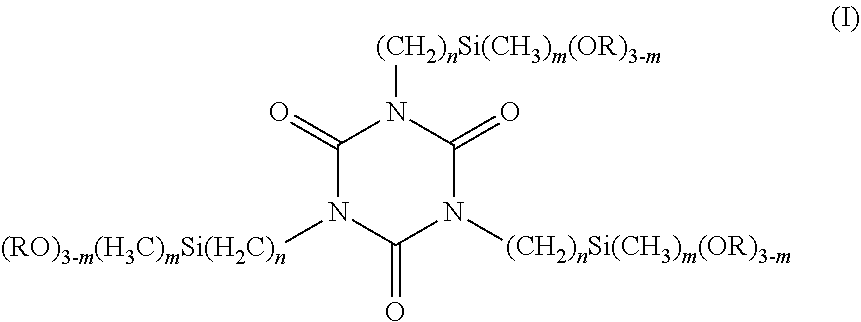Toner external additive and toner
a technology of toner and external additive, which is applied in the field of toner external additive and toner, can solve the problems of low surface treatment efficiency, slow charge rise rate in use as toner external additive, and cannot be said to be etc., and achieves high negative charge-providing performance, raise the hydrophobicity of an external additive, and high surface treatment efficiency
- Summary
- Abstract
- Description
- Claims
- Application Information
AI Technical Summary
Benefits of technology
Problems solved by technology
Method used
Image
Examples
examples
[0121]This disclosure is described hereinbelow in greater detail using specific production methods, examples, and comparative examples, but these in no way limit this disclosure. Unless specifically indicated otherwise, the number of parts in the following blends are on a mass basis in all instances.
External Additive A1 Production Example
[0122]100.0 parts of silica fine particles (product name: AEROSIL 200, number-average particle diameter of primary particles=12 nm) constituting the base material was dispersed in 300.0 parts of toluene and 10.0 parts of tris(3-trimethoxysilylpropyl) isocyanurate was added.
[0123]The was followed by wet milling for 4 hours with a planetary ball mill using zirconia balls having a diameter of 0.5 mm. Filtration was then performed and the resulting cake was dried for 8 hours at 120° C. under a vacuum and was then pulverized. A speed mill was used for the pulverization to yield an external additive A1.
External Additives A2 to A15 and External Additives B...
preparation example
Polymerizable Monomer Composition Preparation Example
[0128]The following components were mixed and then dispersed for 3 hours with a ball mill.
[0129]
styrene82.0parts2-ethylhexyl acrylate18.0partsdivinylbenzene0.1partsC.I. Pigment Blue 15:35.5partspolyester resin5.0parts
[0130]Polycondensate of isophthalic acid and propylene oxide-modified bisphenol A (glass transition temperature=65° C., weight-average molecular weight (Mw)=10,000, number-average molecular weight (Mn)=6,000).
[0131]After heating the resulting dispersion to 60° C. while stirring at 300 rpm, 12.0 parts of an ester wax (peak temperature of the maximum endothermic peak in differential scanning calorimetric measurement=70° C., number-average molecular weight (Mn)=704) and 3.0 parts of 2,2′-azobis(2,4-dimethylvaleronitrile) were added and dissolved to provide a polymerizable monomer composition.
Aqueous Dispersion Medium Preparation Example
[0132]710 parts of deionized water and 450 parts of a 0.1 mol / L aqueous sodium phospha...
example 1
[0142]Toner 1 was evaluated according to the following criteria using the following evaluation methods.
[0143]A modified version of an LBP7700C (Canon Inc.) was used as the evaluation machine wherein the process speed of the main unit had been modified to 350 mm / sec; toner 1 was filled in the cyan cartridge.
[0144]Presuming cartridge downsizing, the diameter of the toner carrying member within the cartridge was also changed to 9 mm.
[0145]Evaluation of the Charge Rise Rate
[0146]The charge rise rate of the toner was evaluated by briefly shaking a two-component developer, prepared by the following method, and measuring the amount of charge of the toner.
[0147]0.5 g of the toner and 9.5 g of carrier N-01 (produced by The Imaging Society of Japan) were introduced into a 50-mL polypropylene container and were held for 24 hours in a normal-temperature, normal-humidity environment (23° C., 50% RH). This was followed by shaking for 10 seconds at a shaking rate of 200 times per 1 minute, and mea...
PUM
| Property | Measurement | Unit |
|---|---|---|
| number-average particle diameter | aaaaa | aaaaa |
| current | aaaaa | aaaaa |
| particle diameter | aaaaa | aaaaa |
Abstract
Description
Claims
Application Information
 Login to View More
Login to View More - R&D
- Intellectual Property
- Life Sciences
- Materials
- Tech Scout
- Unparalleled Data Quality
- Higher Quality Content
- 60% Fewer Hallucinations
Browse by: Latest US Patents, China's latest patents, Technical Efficacy Thesaurus, Application Domain, Technology Topic, Popular Technical Reports.
© 2025 PatSnap. All rights reserved.Legal|Privacy policy|Modern Slavery Act Transparency Statement|Sitemap|About US| Contact US: help@patsnap.com


